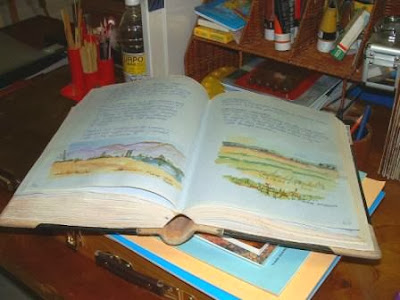Ink sketch and watercolour
"A common symptom of modern life is that there's no time for thought, or for letting the impressions of the day sink in," says Thomas Moore. Setting aside a block of time, however brief, to freely express thoughts and feelings is psychically healthy.
Journals also affirm the value of our lives, preserve our memories and dreams, and help to pin-point emotional patterns. Writing about problems is a great way to work them out, and recording negative emotions is often akin to dropping them altogether.
Keeping a nature journal, for example, is a wonderful way to become spiritually centred. We are rewarded for the attention to detail and patience this practice requires with deepened understanding of what it means to be human and alive and a part of Creation. What you decide to put in your journal is a personal choice. Nature journals can be anything from field notes, which limit themselves to objective descriptions of what the writer has observed, to fully developed poems, stories, or essays in which the landscape is a major character.
You may want to draw or paint in your journal as well as write in it or to fill its pages with photographs or pressed flowers. Experience the natural world through fresh eyes! Keeping a nature journal is your most powerful ally in crafting the kind of life you want.
One of my Nature Journals - here I used a Feint
::











